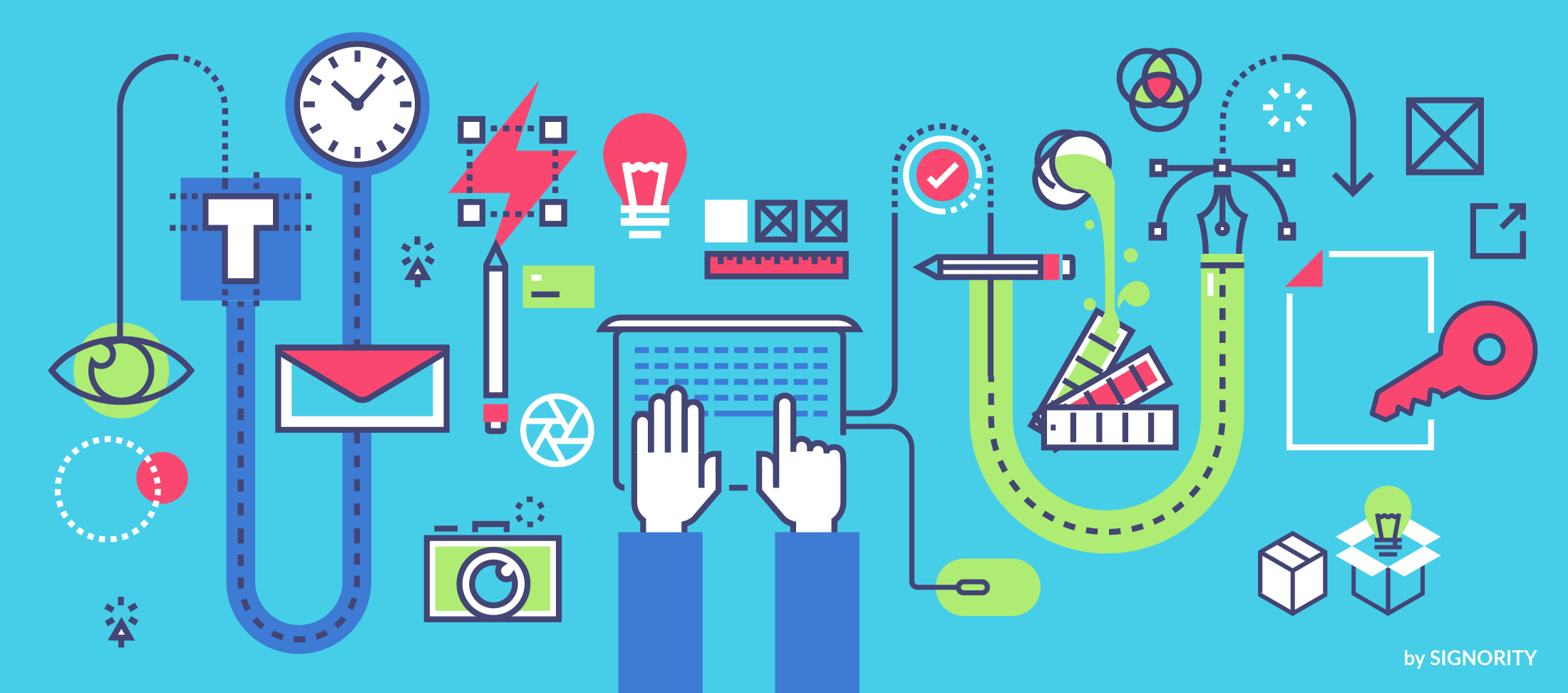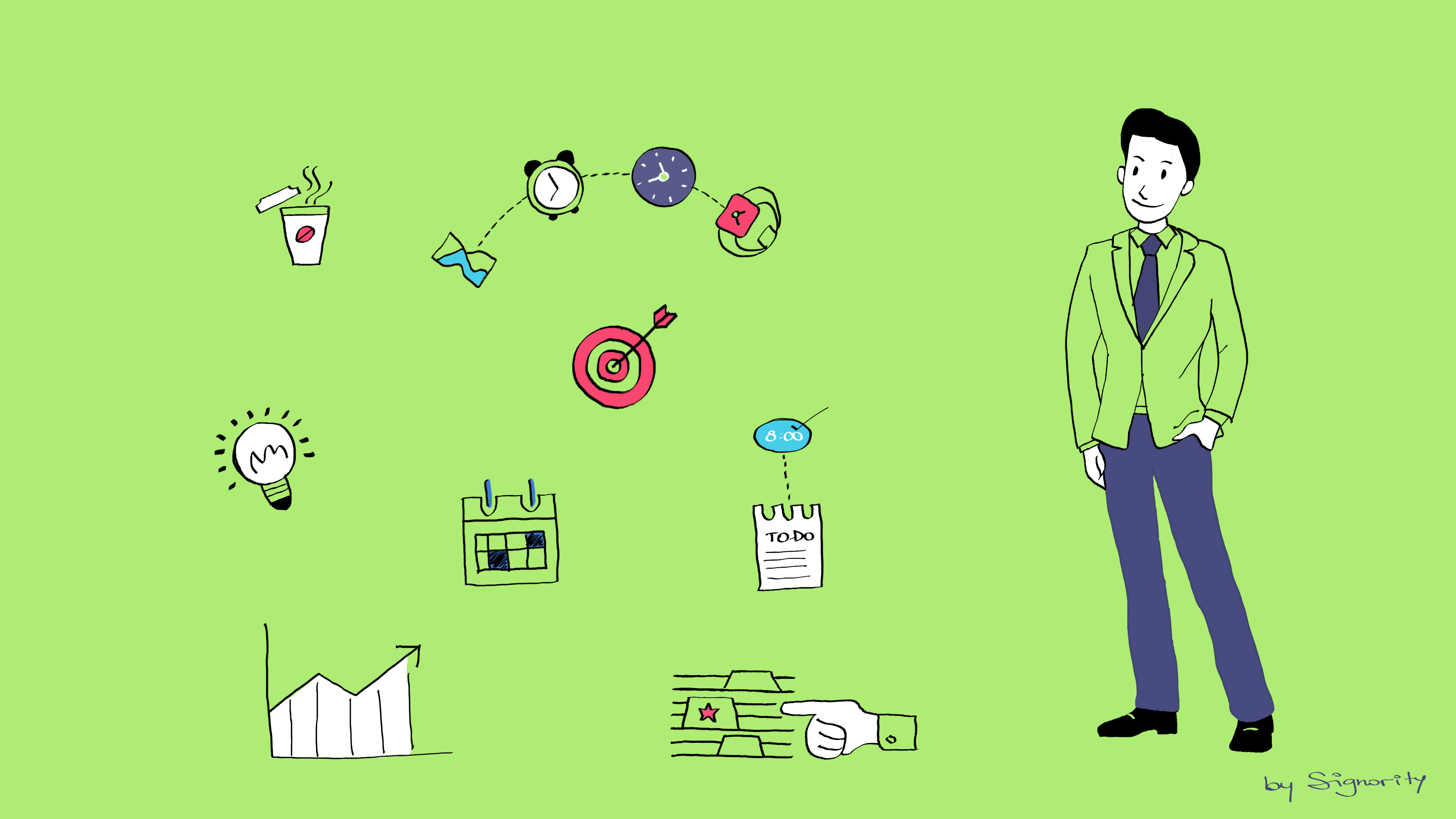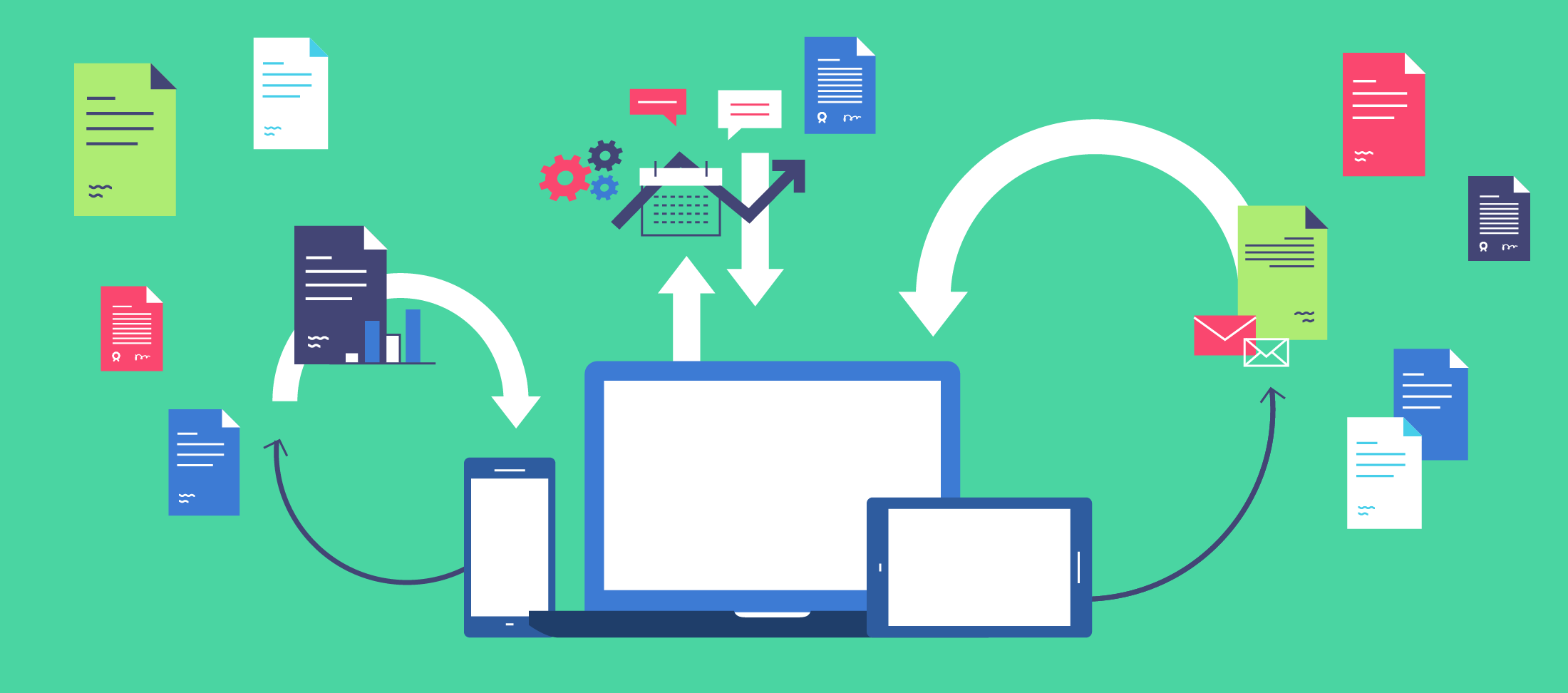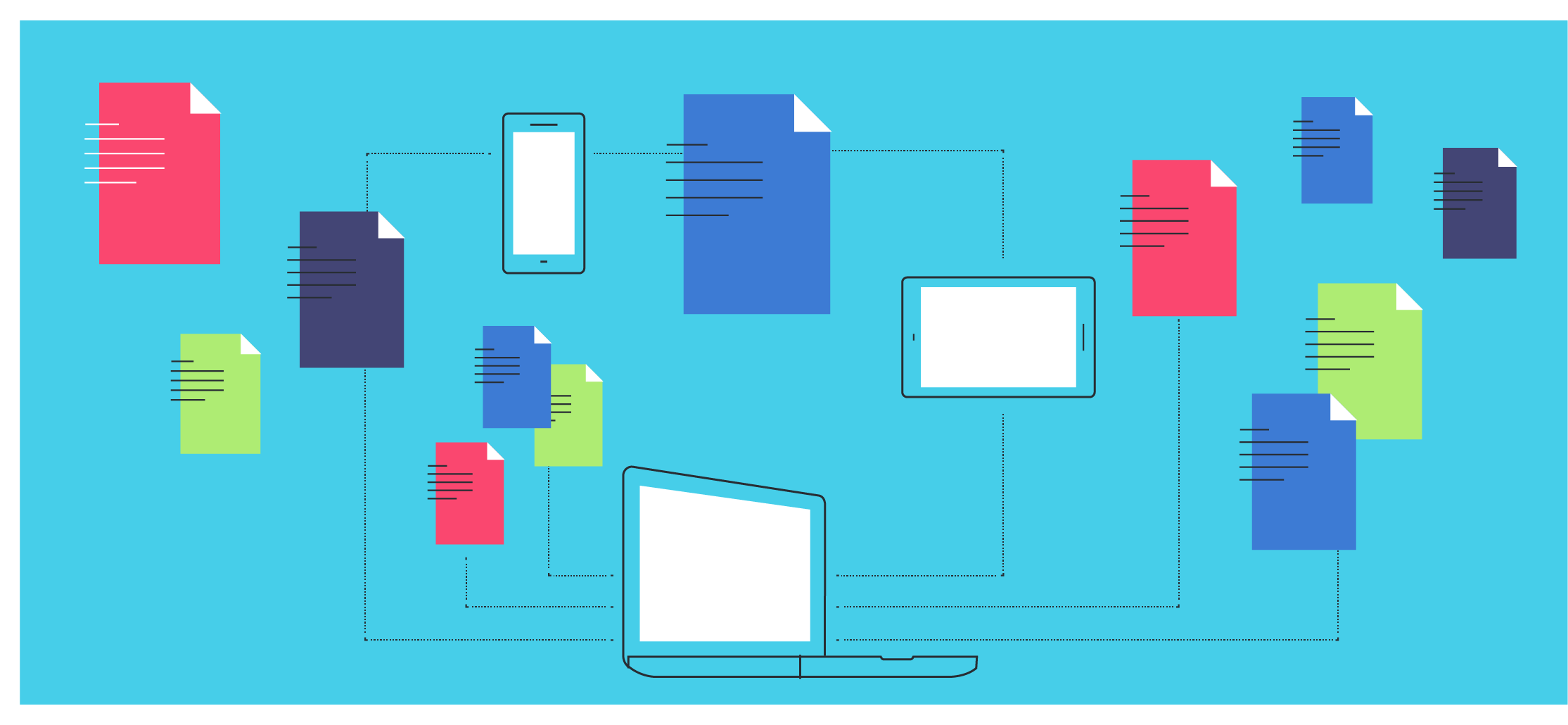Do you hear about “go digital or go home” initiatives and instinctively tighten your purse strings? Many entrepreneurs feel completely spent, and it’s understandable considering all the money they already shelled out to get their businesses off the ground. Let’s not mention all the money they may still owe the bank, friends, relatives, and crowdfunding sources that all contributed to the humble beginnings of their start-up.
And just when they think they are standing on fairly solid ground, someone tells them that the next trend is to go green by shifting to digital business practices. But here’s where they’re misinformed; going digital isn’t a trend nor should it be referred to as the “next big thing.” There is an undeniable progression towards digital operational processes and it has been gaining speed based on historical evidence. It was something that we explored in-depth and shared with you in our piece on The Paperless Journey: The Evolution and Future of Document Signing
First of all, digital business practices aren’t just about living the childhood dream of growing up in a world straight out of the cartoon “The Jetsons.” Going digital has become far more than just the ease of having everything automated or disappear into the virtual cloud and plucked out by voice control. Well, yes, it can be all those things but more importantly, digital business practices has become a social responsibility.
A digital transformation would mean a significant decrease in human error, having multiple devices access all your content, and information would be shared throughout your company easier and faster. You’d be cutting costs by reducing the need for printing, binding, and distributing documents which can all be done via email or digital system. Your people would be communicating more efficiently and getting their work done faster. Furthermore, you are contributing to the bigger picture by lessening your carbon footprint and changing your environmental impact.
Perhaps the issue here isn’t winning the argument on whether a digital transformation for your business is something you should desire but rather if it is possible given the costs it would require to make the shift. Do words like “investment” and “consider the returns” not sweeten the deal nor make you sound like Scrooge any less?
Paperless practices within your reach
But what if there was a way to go digital for less than $1,000 a month?
We’re not talking about cheap alternatives or knock-offs here. Many don’t realize that with the digital “trend” on the rise, more and more options are also riding the wave and developing services to help organizations go green. If you were one of those people who still think that technology costs more than a pretty a penny, then you will be surprised to know just accessible and affordable it now is.
You may think that modernizing your outdated business model will take thousands of dollars. But we said go digital or go home, not go big or go home; meaning you don’t need to make drastic changes immediately. Greener, more digitally driven organizations really start with individuals willing to make the shift.
Not only will going digital and paperless cost you less than $1,000/month, but it will actually save you money in the long run. Your digital beginnings can include signing up for paper-free billing for all your business correspondence with your vendors, suppliers, and utility bills. And your next step would be exploring all the options to modernizing your business.
We’ve done the legwork for you by finding inexpensive ways for your organization to begin its evolution to the modern, eco-friendly business model that so many other companies have already adapted to.
Whether your needs are email marketing or accounting, a cloud service will meet your needs taking into account your technological thresholds and more importantly, your budget. An excellent cloud service will guide you through everything from project management (PM) to customer relationship management (CRM) and even backing up all your precious data. And yes, all these suggestions for each department of your organization costs less than $1,000/month:
Administration
Good CRM software should go beyond tracking and maintaining client information and viewed as just a sales tool. If your company is still passing along information through a shared spreadsheet or long email threads, then it’s likely that you’re missing something or forgetting it entirely. CRM software keeps all your information in one place and organizes it efficiently.
CRM services like Zoho CRM, Insightly, Apptivo, and Pipeline Deals all offer free trials. CRMs can cost as little as $12/month to as much as $300/month. Find one whose services, apps, and add-ons apply to your business.
With business plans that are only $50 per month, Signority is trusted by over 150,000 businesses and individuals for their document signing needs. As a business owner, you deal with multiple forms and contracts that all need to be signed. Signority ensures your recipients can view and sign documents from anywhere and on any device.
You would spend less time managing the details because all your documents would be stored in Signority’s centralized location and easily managed with an intuitive dashboard. Our business plan offers unlimited documents, unlimited templates, bulk sending, bulk signing and electronic & digital signature. For those of you wondering how digital signatures work or the differences between electronic and digital signature solutions, this should help: “The Breakdown: Electronic Vs. Digital Signature”.
Information Technology
Yes, building an IT infrastructure for your business can become a mammoth task, that can take months to set up. You’ll be constrained by your limited resources, lack of expertise, time, and inability to understand the tech jargon. Lucky for you, software companies have taken into account non-teck folk — like me — by building tools that don’t require a master’s degree in computer sciences.
Virtual infrastructures and cloud-based data centers are expensive and probably not something you want to undertake at this point. If your only concern is making sure your data is secure, then a service like Dropbox guarantees that your data if protected against human error, hardware failures and any other reason under the sun.
Costing only $8.25/month or $99/year, Dropbox Pro gives you the option to subscribe monthly or annually and the subscription includes 1TB of space. Dropbox Business, on the other hand, is meant for organization and groups and depends on the size of your team and billing country. Dropbox Business for teams cost $12.50 per user and comes with unlimited space to work with.
Sales and Marketing
Depending on your industry, you may still need to take customer satisfaction surveys regularly. When was the last time you were handed a printed out paper survey? With so many people preferring to type or click buttons, we doubt that any of your clients will be happy to hand-write anything for you.
Zoho Survey is a survey management software that costs just $19 per month. You can create online surveys in a matter of minutes and reach your audience across all devices.
And at just $25/month, MailChimp will automate your emails for 1,501 – 2,000 subscribers for your email marketing campaigns. You can pay as you go as your email list grows. With Mailchimp, you create, send, and track your email marketing campaigns while also managing your contacts and segmenting your customers list. Furthermore, you can automate your emails to send on schedule without having to login and doing it manually.
Finance and Human Resources
With service rates that start at only $39.95 per payroll run, SurePayroll is not only affordable, but it takes about 10 to 15 minutes to complete enrollment and set up within five business days. It boasts that it the only full-service online payroll solution in the market by making all the calculations, paying and filing all federal, state and local payroll taxes while even working with IRS, if needed.
For your business, this means saying goodbye to writing multiple checks every month just to pay your people. SurePayroll is your digital option to paying all your employees including independent contractors and even hourly workers, including employees that are working in other states. Furthermore, SurePayroll offers the free option for clients to go mobile with their payroll through their apps for both IOS and Android devices giving you complete control wherever you are.
All in all, modernizing your business can be hassle-free and affordable — whether you are a small or large business.
Know of an app that’s has helped transform your business? Let us know, we’d love to add it to our list!
Looking to take your business paperless? Sign-up now and get a 14-day free trial to a Signority eSignature Plan.






